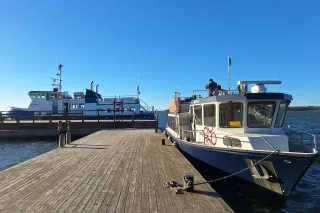Customers' overall score for VTT is 4.2 (on a scale of 1–5); competitors are scored as 3.8. VTT’s lead over competitors has increased compared to previous years. This information comes from the annual customer impact study.
The aim of the study is to produce information and collect feedback on how VTT's projects have benefited customers. The survey 2017 was conducted by Feedback Oy. They interviewed 150 VTT customers, of whom 121 were Finnish and 29 were international. The respondents represented both commercial projects and jointly funded projects (like projects funded by EU). The majority of the respondents represented commercial projects.
VTT improves customers' know-how and knowledge base
Customers see VTT's role in achieving benefits as considerable. More than half of the Finnish respondents estimated that the business benefits they had gained would not have been achieved without VTT or that VTT at least accelerated the materialisation of the benefits. The foreign respondents' views were similar.
Almost half of the customers stated that they had used the results of cooperation commercially, for example.
The biggest reasons why customers choose VTT as their partner are expertise and competence of VTTers. VTT also stands out for broad range of know-how, while some see cost and bureaucracy as VTT’s weaknesses.
In other words, customers trust in VTT's excellence, although their expectations for projects are also high. The key with regard to both direct and indirect outcomes of projects is how effectively VTT strengthens the customer's know-how.
"In my opinion, the overall score given by customers is excellent feedback on the work that our research teams are doing for our customers. We can be genuinely pleased and satisfied with the results of our work, and I emphasize that the whole of VTT commits to a good customer experience in the future as well. Our operations have to adapt to customers’ needs", says Mika Toikka, Executive Vice President of Commercial Operations.
VTT has been conducting customer impact study since 2004. The survey is carried out in the form of a structured telephone interview, and its sample population is based on projects completed one or two years previously.



